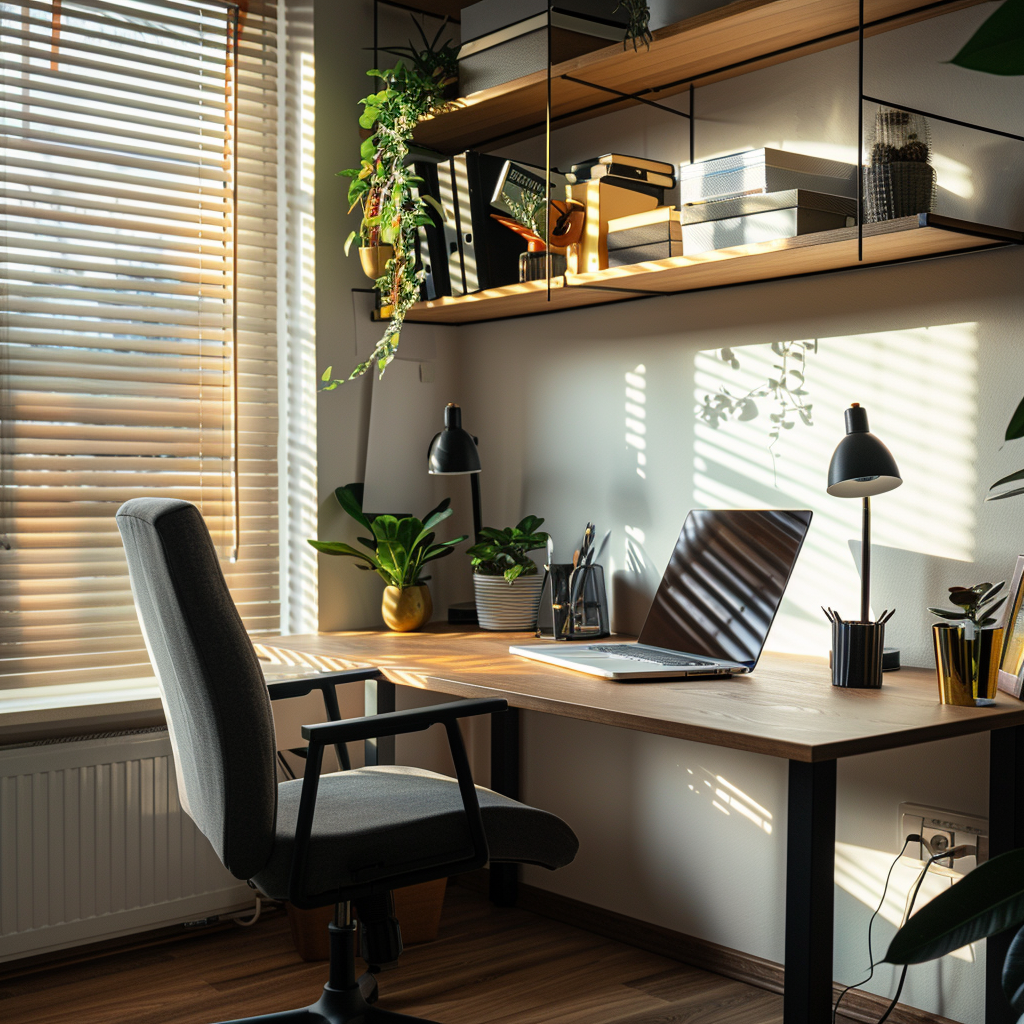With more people working remotely than ever before, having a dedicated home office has gone from being a luxury to a necessity. But what if your home doesn’t have a built-in office space? No problem! Converting a spare room into a functional home office is easier than you think, and it can dramatically improve your productivity and comfort. Whether you have a guest room that’s rarely used or an underutilized space, this guide will walk you through how to transform it into the perfect home office that works for you.
1. Assess the Space and Plan Accordingly
Before jumping into your home office conversion, take a step back and evaluate the room. What are its dimensions? What’s the natural light like? Are there any existing furniture pieces you’d like to keep? Understanding the room’s potential will help you plan the layout and design.
Unique Insight: Don’t just think about how the space looks—consider how it feels. A cluttered or uncomfortable space can hinder your work efficiency. Planning for both aesthetics and functionality will help create a room that supports your workflow.
Actionable Tip: Measure the room and sketch out a basic floor plan. Identify key areas for your desk, storage, and any additional seating or equipment you may need. Keep in mind the flow of movement, ensuring you have enough space to move around comfortably.
2. Choose the Right Furniture for Comfort and Productivity
The centerpiece of any home office is the desk, but comfort should be your top priority. Invest in a desk and chair that are ergonomic to avoid strain during long work hours. Consider desks with built-in storage options to help keep your workspace organized, and make sure your chair provides ample back support.
Unique Insight: Standing desks are becoming increasingly popular as they offer flexibility and help reduce the negative health effects of sitting for extended periods. If a standing desk is out of your budget, consider a standing desk converter, which can be placed on top of a regular desk.
Actionable Tip: If you’re working with a small space, look for foldable or wall-mounted desks that maximize the area without compromising on functionality. Adjustable chairs and desks will also give you flexibility if more than one person is using the space.
3. Optimize Lighting for Productivity
Good lighting is essential for any home office. Natural light not only boosts mood but also helps reduce eye strain. Position your desk near a window to take advantage of natural light during the day. However, you’ll still need artificial lighting for darker hours or cloudy days.
Unique Insight: A combination of task lighting (like a desk lamp) and ambient lighting (overhead or floor lamps) creates a balanced environment that is both functional and pleasant to work in.
Actionable Tip: Use daylight or soft white bulbs in your desk lamp to mimic natural light and avoid harsh, fluorescent lighting. This will create a more relaxing and productive workspace.
4. Incorporate Storage Solutions to Stay Organized
Clutter can quickly derail productivity, so having a well-thought-out storage system is crucial for maintaining focus. From filing cabinets to floating shelves, you can incorporate a variety of storage solutions that keep everything in its place while freeing up desk space.
Actionable Tip: Utilize vertical space by installing shelves or pegboards above your desk. This will keep items like files, books, and office supplies easily accessible without crowding your workspace.
Pro Insight: Consider multi-functional furniture, like a storage ottoman or a desk with built-in drawers, to maximize the utility of your space while keeping it clean and uncluttered.
5. Personalize Your Home Office for Inspiration
One of the best parts about having a home office is that you can design it to reflect your personality. Whether it’s adding artwork, family photos, or even a vision board, personal touches can make your office feel like a space you actually enjoy being in, boosting creativity and focus.
Unique Insight: Plants are a great addition to any office, as they not only improve air quality but also reduce stress and promote a sense of calm. Low-maintenance plants like succulents or snake plants are perfect for a home office setting.
Actionable Tip: Create a mood board of colors and décor that inspire you, and use it to guide your design decisions. Choose colors that promote focus and calm, like soft blues, greens, or neutrals, rather than overly bright or distracting hues.
6. Ensure a Quiet and Distraction-Free Environment
One of the biggest challenges when working from home is managing distractions. Whether it’s household noise or the temptation to multitask, it’s important to set boundaries within your home office to create a distraction-free environment.
Actionable Tip: If noise is an issue, consider adding soundproofing elements like thick rugs, curtains, or even noise-canceling headphones. Establish clear work hours with family members or housemates so they know when you need uninterrupted time.
Bonus Tip: Position your desk away from high-traffic areas or distractions like the TV. If you’re using a shared space, a room divider can help separate your work zone from the rest of the room.
Conclusion: Creating a Home Office That Works for You
Converting a spare room into a home office is an opportunity to create a workspace that’s comfortable, functional, and tailored to your needs. By carefully selecting furniture, optimizing lighting, and incorporating thoughtful storage solutions, you can transform even the smallest room into a productive haven. Whether you’re working from home permanently or just need a dedicated space for occasional tasks, these tips will help you create an office that enhances both your productivity and well-being.












